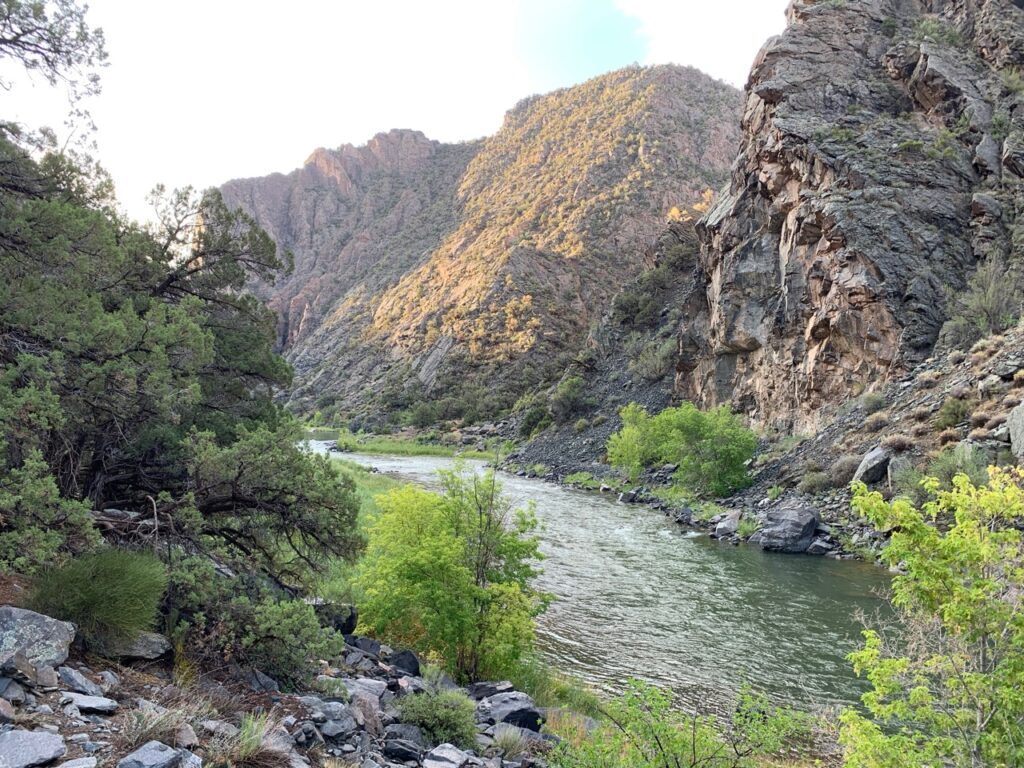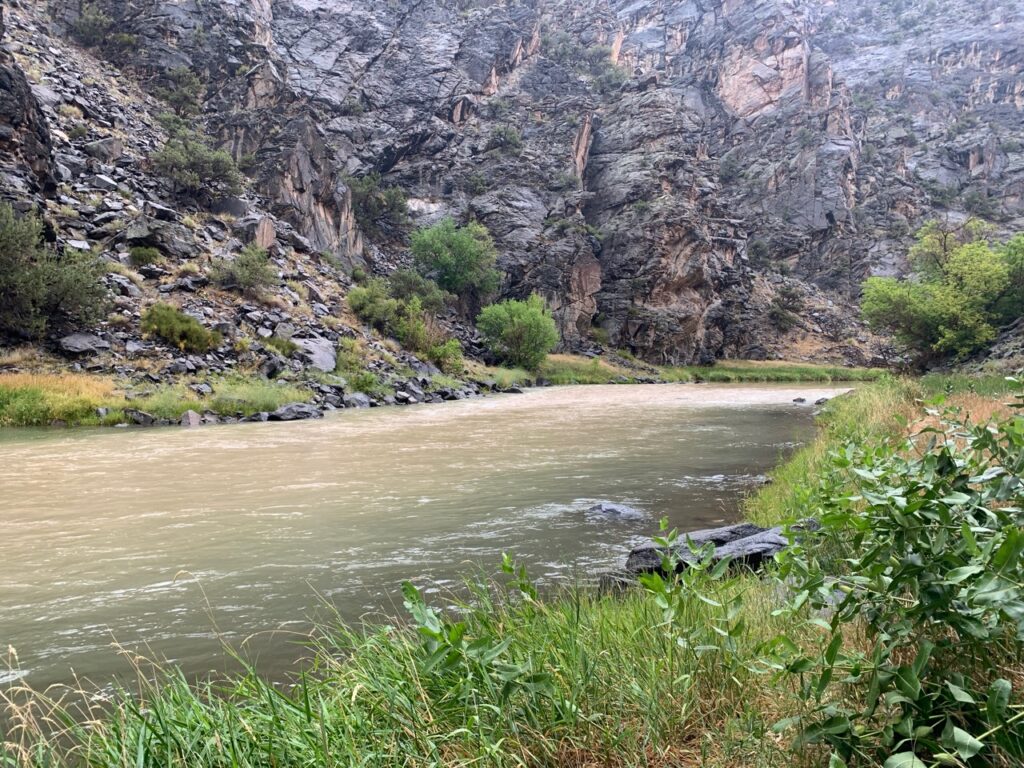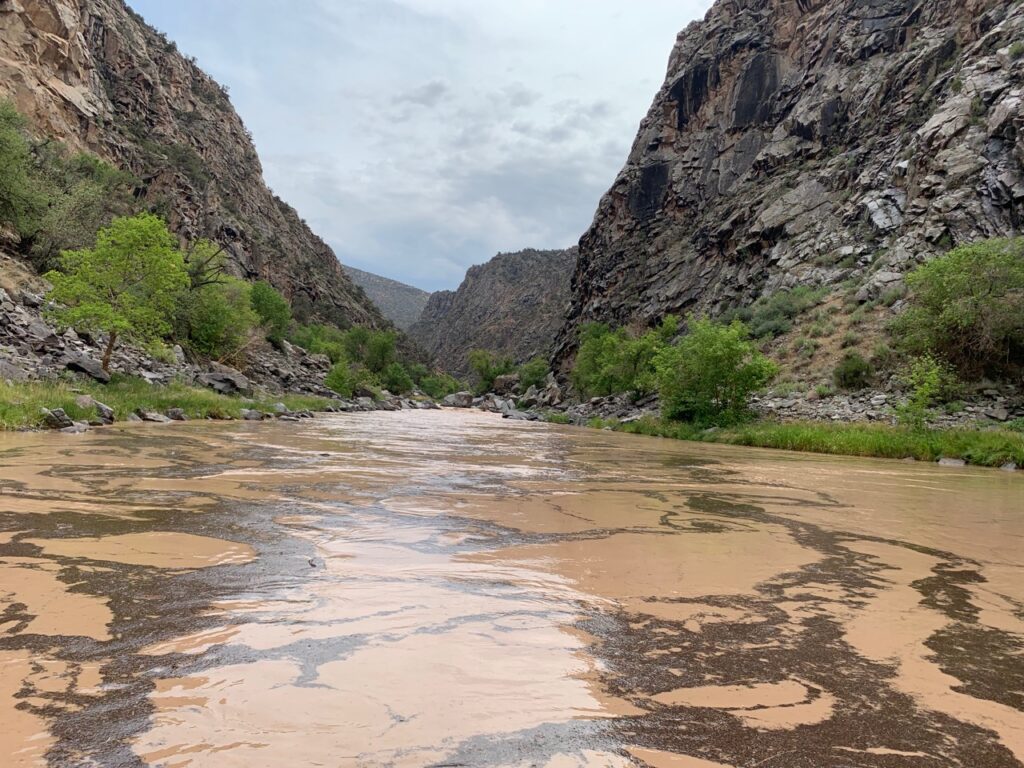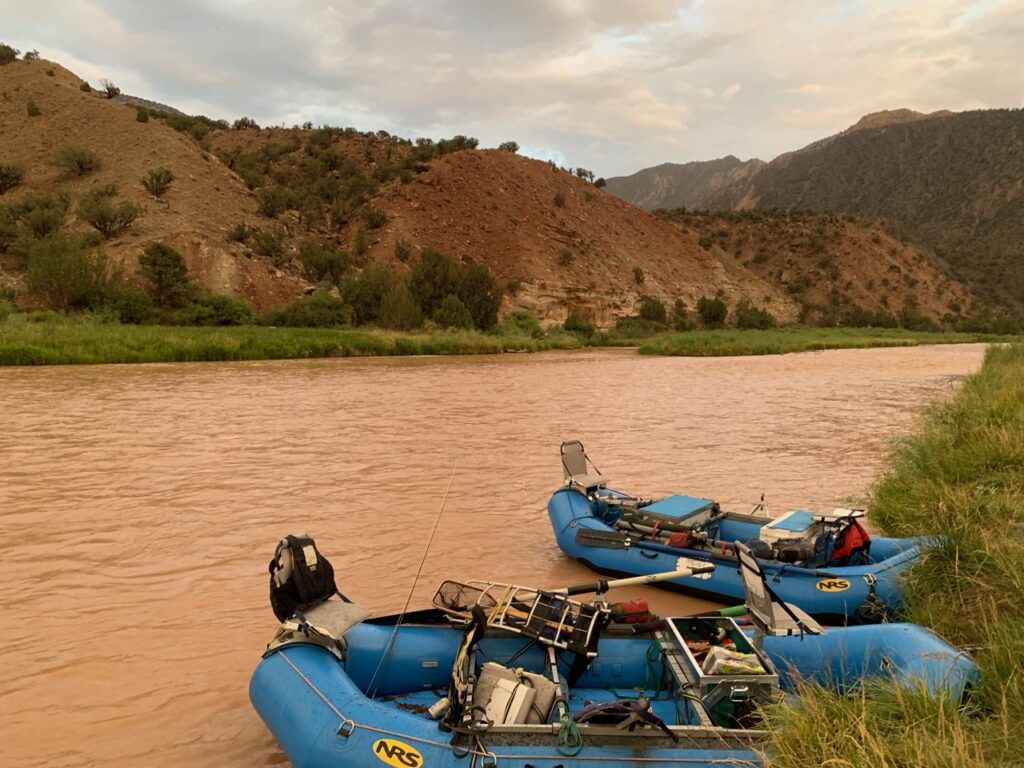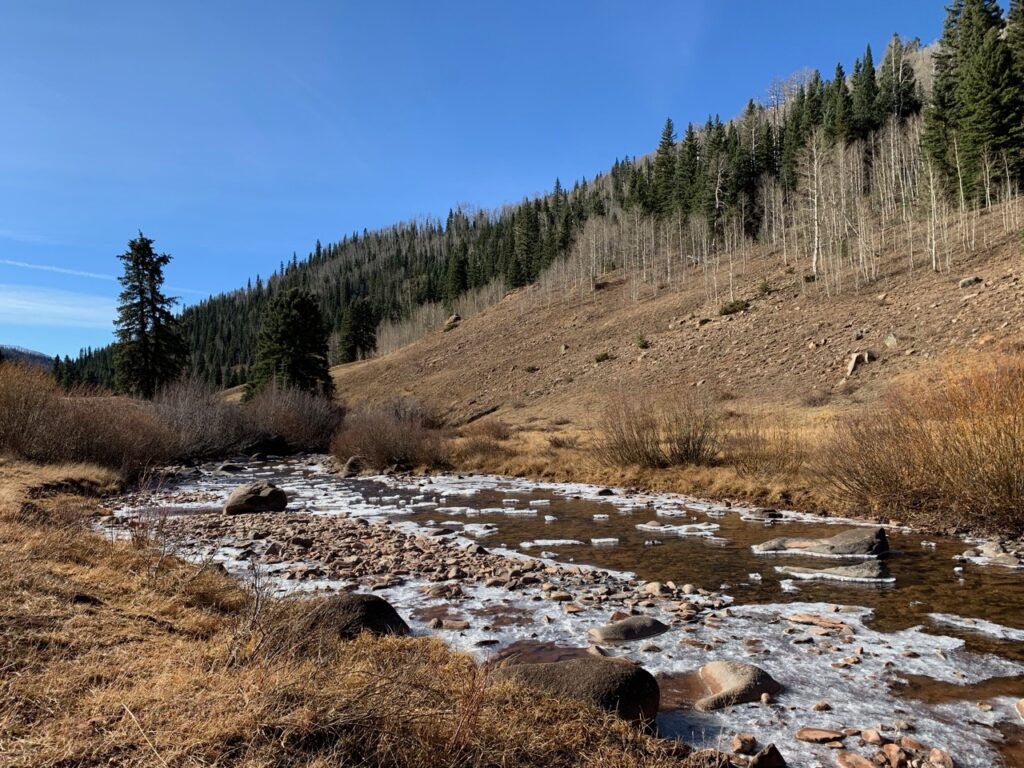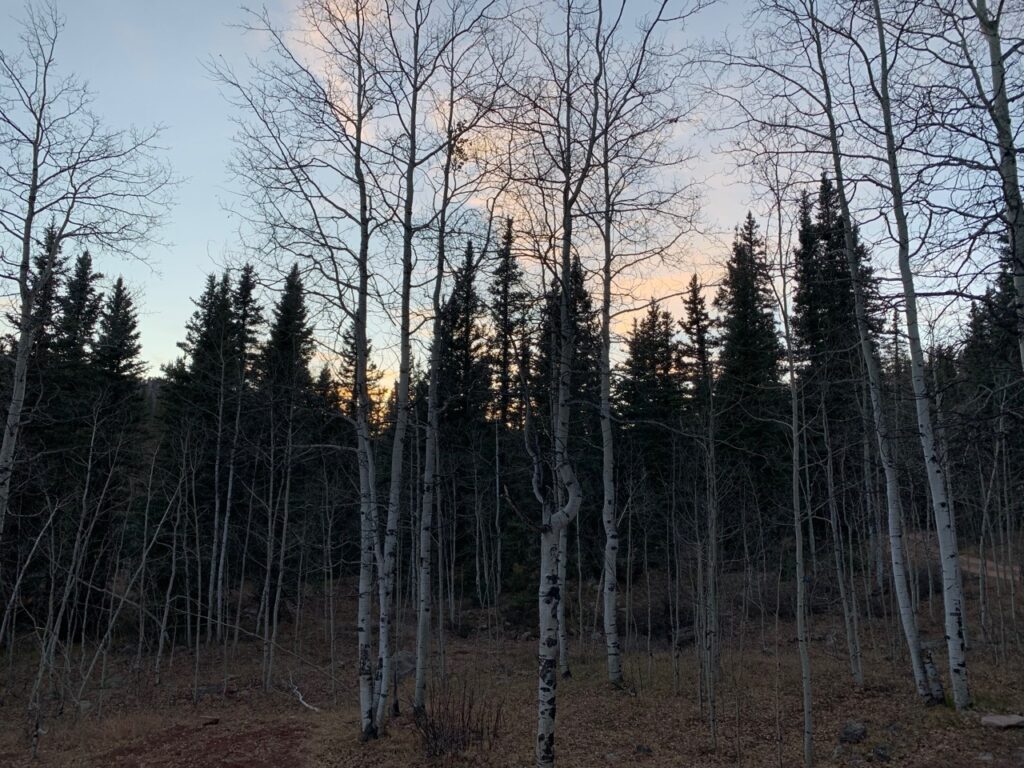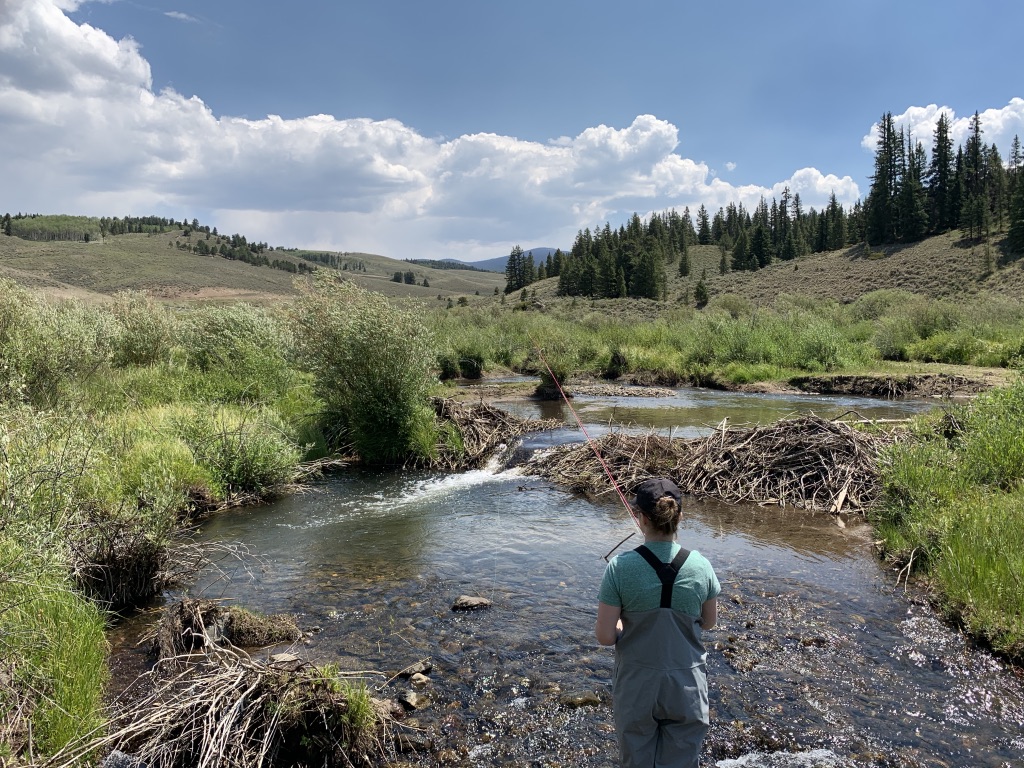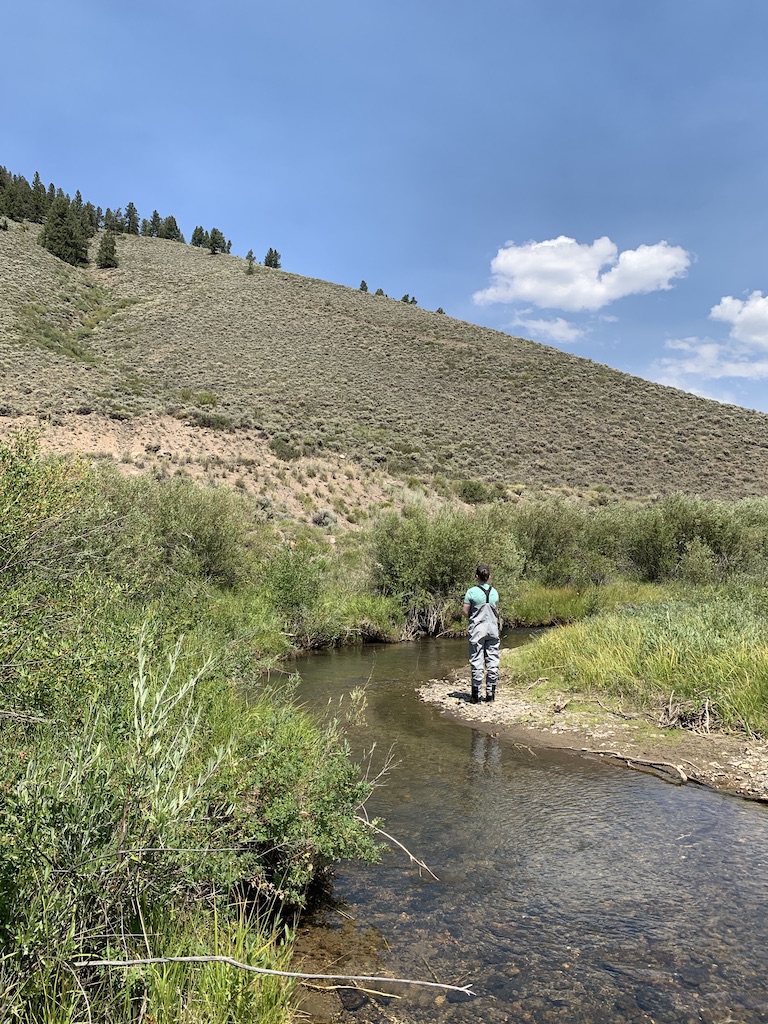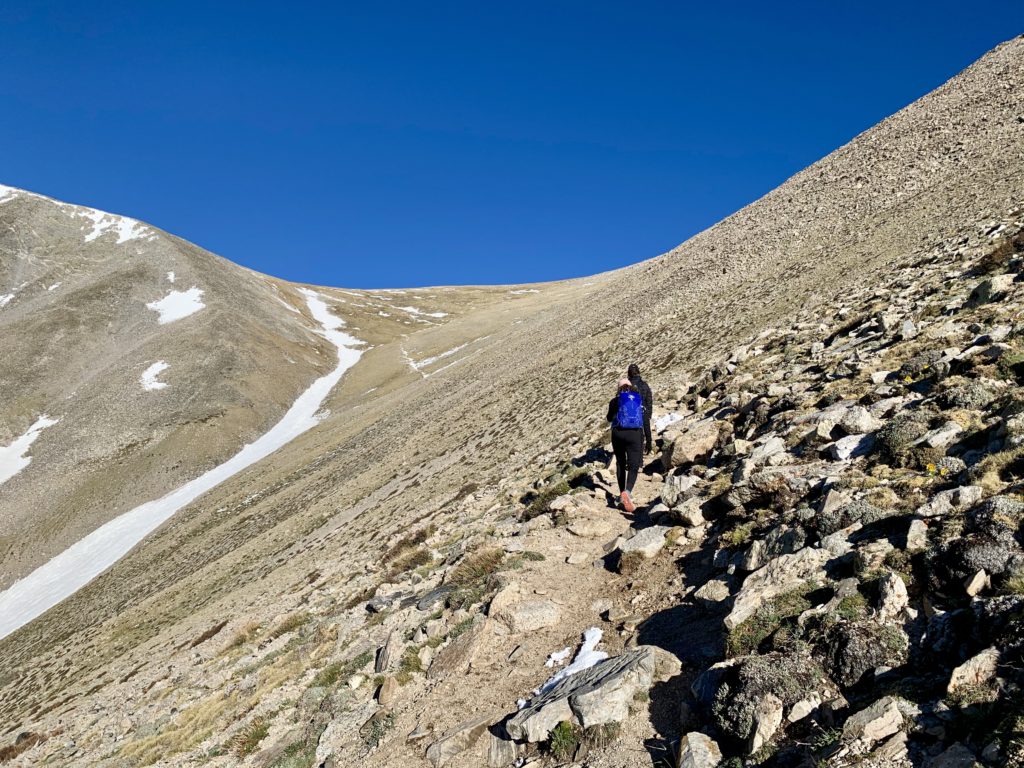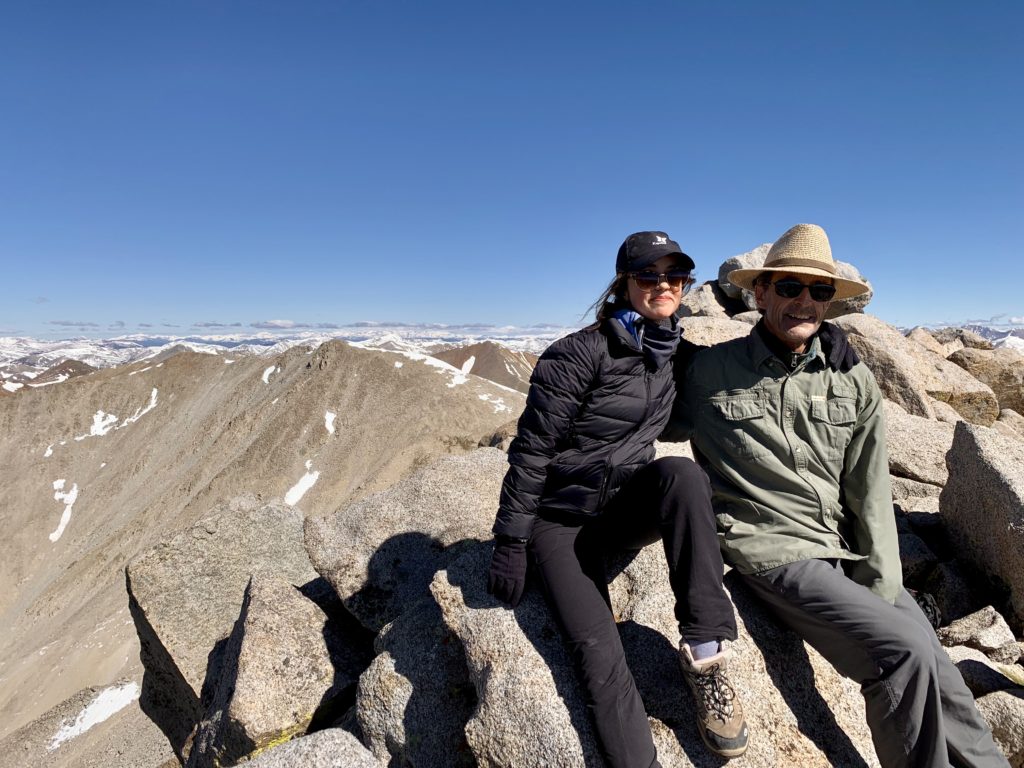The remains of Private Jacob Sattler are laid to rest on a bluff just off the two track as it begins its final descent to the bottomland. A small wooden corral marks off his resting place. Inside the corral a mound of stones denote his aspect of rest, facing toward the first light of morning. A simple headstone reads “Jacob Sattler, Pvt, US Army, May 1881”. Two small Stars and Stripes flutter in the breeze at each end of the corral, and a half-dozen plastic flowers, red, white, and blue, sit next to the headstone.
Little is known of Private Sattler beyond what is inscribed on his headstone. A veteran of twenty-five years’ service in the army, he departed Fort Garland in the spring of 1881 to hunt deer, and was never heard from again. His remains were discovered two and a half decades ago alongside the stream that flows at the foot of the bluff. His death is thought to be the result of a self-inflicted gunshot.
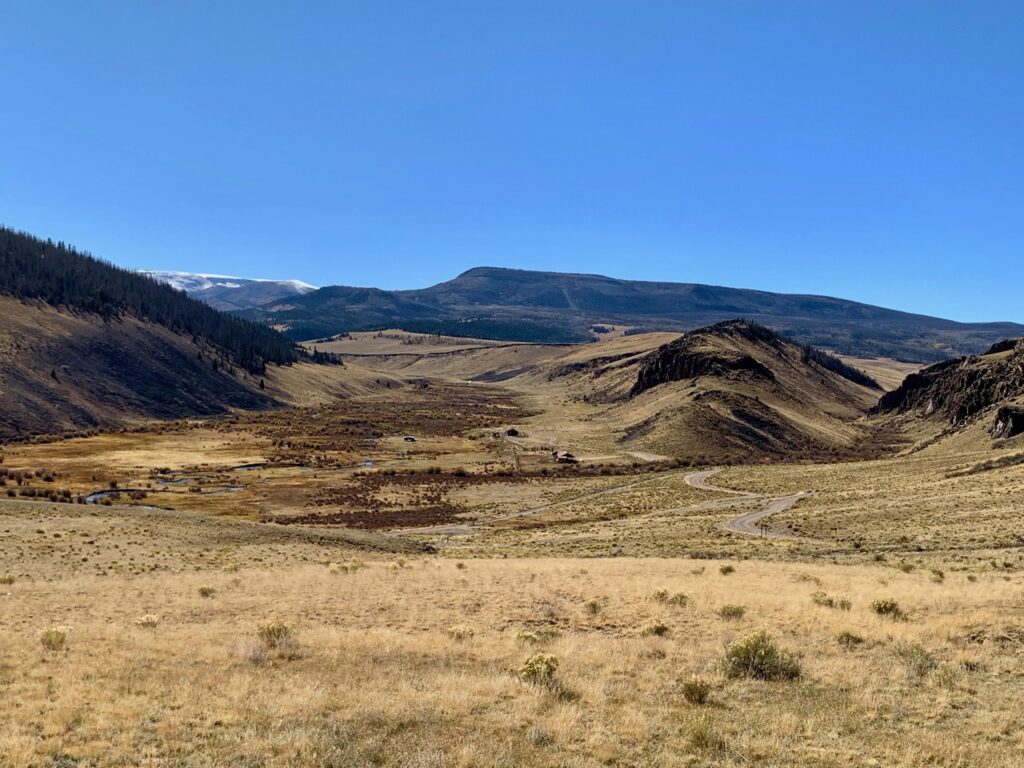
He rests in a place of great beauty. Looking west beyond his headstone, the valley tapers as it curves towards the south. A small stream cuts its course back and forth across the bottomland, in places reflecting snatches of silver from the sun overhead. The ground rises steeply from the valley floor, lifting towards mountains topped with stands of dark timber and in the distance, glimpses of snow dusting the otherwise bare peaks of the San Juans. To the east the stream tumbles through a narrow gorge at the foot of the bluff, disappearing from view then re-emerging where the terrain widens, the slope of the countryside hinting of plains beyond.
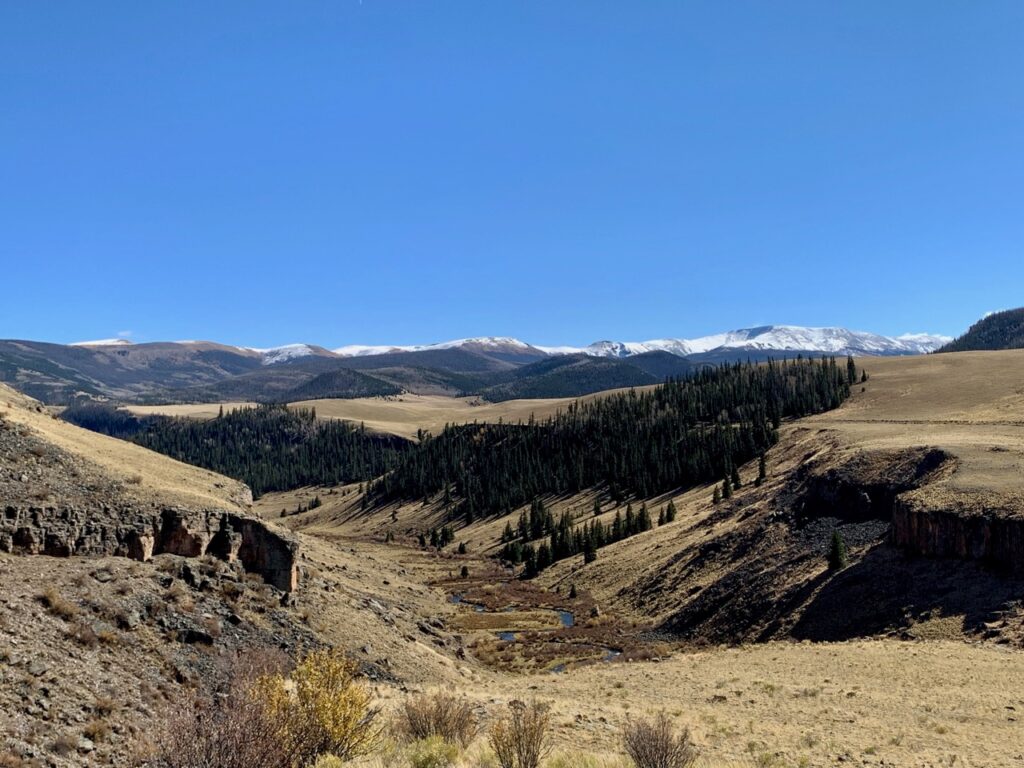
Closer inspection reveals the footprints of modern-day intrusion upon the landscape. A couple of dirt roads score the earth’s surface. A small cabin and a cluster of cattle pens sit in the distance, and although I stand alone today, this valley is something of a playground for hunters, anglers, ATVers and hikers. We celebrate the peace and quiet and apparent solitude which provide a break from our busier lives yet once we’ve had enough leaving for our creature comforts involves little more than the turn of a key.
Author and mountaineer Robert Macfarlane posits that mountains, and by extension the natural world, exist contemporaneously in two separate planes, one the fact and sum of their physical reality, the other the values and perceptions we ascribe to them both as individuals and collectively through shared cultural values. To some the relationship to this countryside was looked at through the lens of partnership, the land viewed as a nurturer and provider. To others the lens was one of confrontation, the land a place of danger and wildness to be conquered, moulded, and exploited.
Twenty five years of service that included the Civil War and the conquest of a frontier that while wide open and beautiful, but equally solitary, harsh, and indifferent, able to turn violent and visceral in the blink of an eye. For some, once the threshold was crossed, there could be no going back to life as it was before, no unseeing of what had been seen, no staunching of what had been cut open.
I wondered of Private Sattler’s relationship to these lands, and the valley in which he elected to die.. Who knew what his eyes would have witnessed over those twenty-five years of service. Sanity and survival would likely have depended on equal parts luck and smarts, and if either ran out……
I hop back in my truck, continue down the road and establish my camp next to the creek. That night, coyotes howl in the far off under a sky immense, cold, and silent, the same sky that Private Sattler would once have gazed upon, a sky as capable of engendering as much a sense of dread as awe, of anger as acceptance, of despair as succor.




